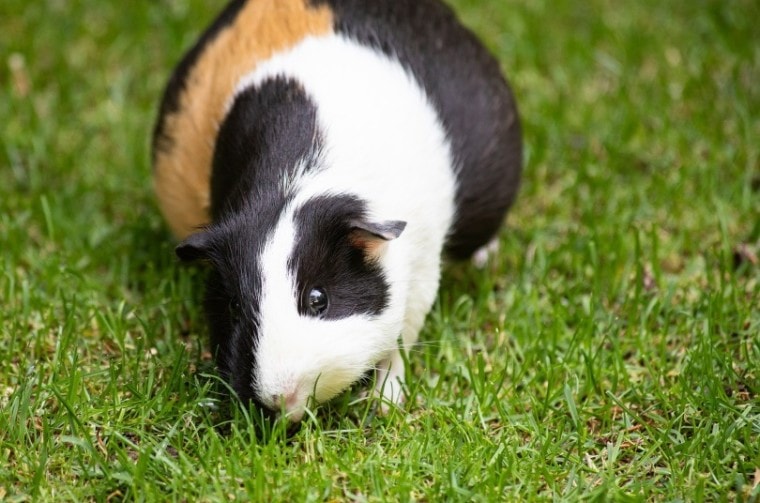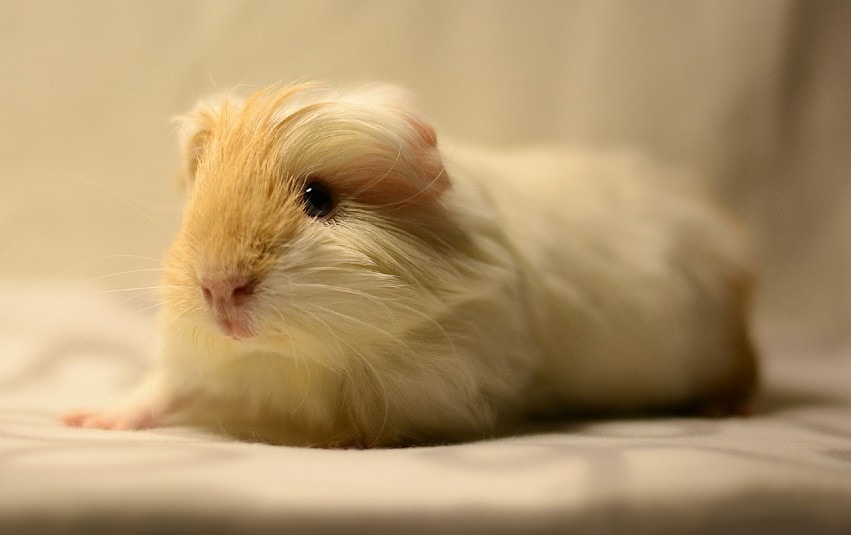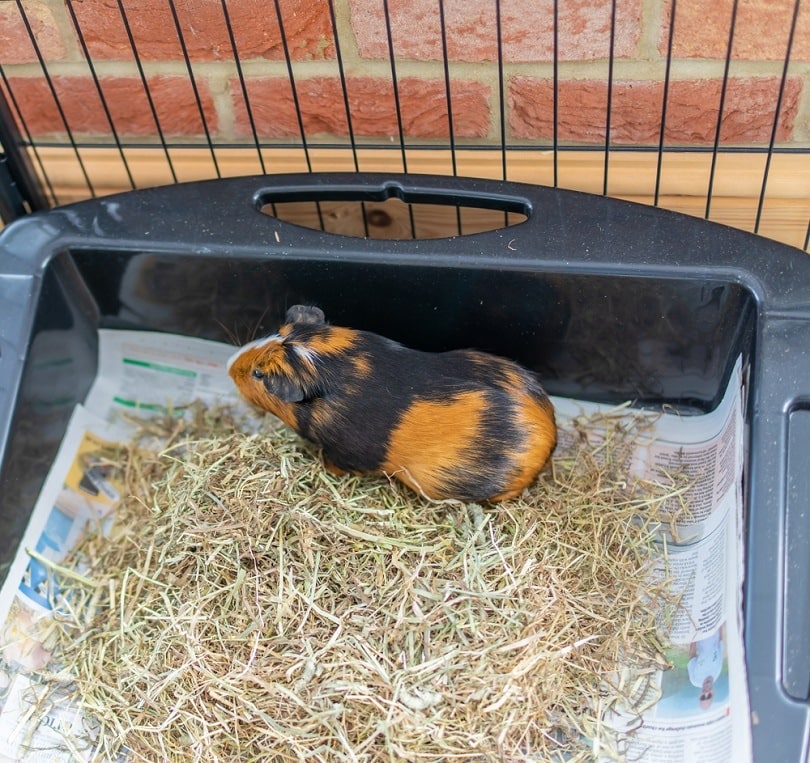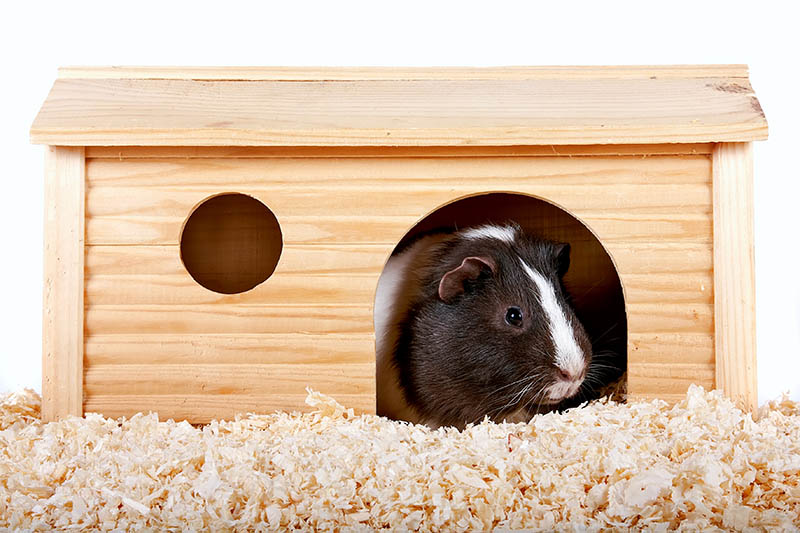
Guinea pig owners may sometimes wonder if they can put their small animals outside. Is it possible? Under what conditions? Are there any risks?
The short answer is yes, guinea pigs can live outside, but only under certain conditions that guarantee their safety. If you have a fenced garden or a protected balcony, you can regularly take your guinea pig outdoors. You can even set up a permanent cage outside, especially if you have several of these friendly, gregarious little rodents. There are, of course, certain precautions to follow, since being outside means your little furry companion will be more exposed to the whims of Mother Nature, as well as to potential predators.
What You Should Know Before Moving Your Guinea Pig Outside
The choice of male pronouns in this article (he/him/his) is a stylistic choice by the author and not an indication of this information not being appropriate for female guinea pigs. Both sexes of guinea pigs can be housed outdoors with the precautions and steps listed in this article.
As a rule of thumb, if you aren’t sure about the suitability of the outdoors for your guinea pig, it’s best to play it safe and house them indoors instead.
You may have in mind the image of South American guinea pigs living free and running happily in the fields. Although your little guinea pig is descended from the same species, you should know that it was domesticated around 6,000 years ago. Therefore, significant morphological and physiological changes have taken place: your pet guinea pig is no longer as robust as its cousin from South America.
Thus, leaving your guinea pig roaming alone in your garden under the pretense of offering him some freedom is therefore irresponsible because the dangers are numerous for your small and gentle rodent. Indeed, guinea pigs need attention, contact with their humans, and stimulation to thrive. Therefore, life outside will require some adaptation against the cold, predators, and…boredom!

What Temperature Can Guinea Pigs Stay Outside?
Guinea pigs can survive outside temperatures between 64–73°F (approximately 18–23 °C). On the other hand, if you live in places where the temperatures drop below 59°F (15°C) or exceed 79°F (26°C), building a suitable outdoor shelter for your guinea pig will be much more challenging, especially if you plan to leave it outdoors all year long. In any case, use common sense and bring your little rodent inside your house if the weather conditions become dangerous for him.
Can Guineas Pigs Stay Outside in Winter?
Yes, provided they are safe from predation, the elements, and other hazards, guinea pigs can live outdoors year-round. However, it is advised to not leave them unattended outdoors, especially when temperatures are at extremes.
The 5 Steps to Make an Outdoor Cage for Your Guinea Pig

Although many owners use cages purchased from pet stores, they are often too small and do not provide the space that guinea pigs need. They will be better off if you can give them a large, exciting environment with enough space to explore. Whether you keep yours indoors or outdoors, there are plenty of options to give your little rodent a comfortable living space.
1. Design a Plan for the Outdoor Cage
The outdoor guinea pig cage should be sturdy. Designing the enclosure is the first step in preparing it. How big should it be? Well, as a general rule, the bigger it is, the better. Guinea pigs need at least 2 square meters of space; if you have two animals, 3 square meters should be considered a minimum.
An old cupboard or small cabinet can also be easily transformed into a guinea pig cage. This will save you on materials and avoid you having to build the structure yourself.
2. Gather the Materials
The best outdoor cages are made of solid wood, which helps protect the guinea pig from the elements while providing good insulation. A well-designed cage also helps preserve your tiny pets from potential predators. So, in all cases, you should avoid buying inexpensive or flimsy plywood. You will also need the following tools:
Note: If you don’t feel comfortable building the cage yourself, you can find ready-made ones or easy-to-assemble enclosures at a pet store. In this case, the instructions will help you assemble the cage.

3. Build the Wooden Frame
Start by taking the measurements and cutting the wood. You will need at least four pieces of lumber at each of these lengths, more if you are building individual frames for each of the six sides of the cage and the door. Measure the wood, and double-check your measurements before you cut it. Using the drill, drill holes slightly smaller than the screws you have, then insert the screws between the different pieces of wood to assemble the frame.
Note: Building the frame can be quite tricky. If you do not have much experience with these tools, you can purchase ready-made frames at a pet store or on the Internet.
4. Install the Floor, Walls, and Roof
The outdoor cage should have a solid floor made of wood or plastic. Although some people recommend using wire mesh for the floor, it can be dangerous for your guinea pig, as he could easily get a leg stuck within the wire mesh. The roof should have a slight slope backward so that rainwater can flow into it, and you should cover it with two or three layers of bitumen to make it waterproof. The walls should be made of chicken wire that you cut to the correct size before securing it to the frame with wood staples.
Unfortunately, the wooden floor will absorb urine. You will, therefore, have to cover the bottom with a substrate and change it regularly. Timothy straw is excellent for this. In addition, some guinea pigs may gnaw on the floor, which will require you to change it more often.
5. Protect and Insulate the Cage
To protect the cage from cold, heat, mold, urine, and animal feces, you will need to cover it with wood varnish. You must choose it carefully so as not to make your pet get sick. Look for a polish that you can use specifically for guinea pigs’ cages. If you want to keep the cage in a semi-open place, applying varnish is not as important, but it can help extend the life of the cage.

Important Tips
Conclusion
In short, you can take your guinea pig outside, as long as you follow basic precautions and don’t forget to visit him every day! But more seriously, think carefully if you want to invest the time and money into building or purchasing a suitable outdoor cage for your little rodent. And in any case, don’t leave him alone and consider adopting two or three other furballs to keep him company.
Featured Image Credit: minka2507, Pixabay









